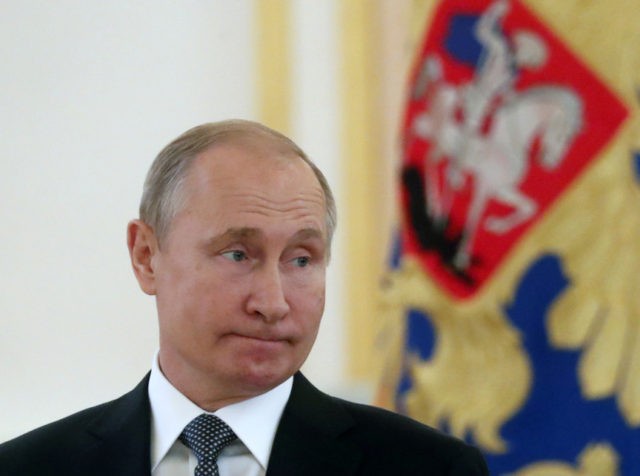The Russian state weather agency on Tuesday revealed that radiation levels in the city of Severodvinsk increased by 400 percent to 1,600 percent after a missile exploded at a nearby port facility last Thursday.
Officials initially said there was no radiation released in the accident at all, then grudgingly admitted to a “temporary spike” in background levels.
Reuters on Tuesday noted that some outside observers believe the radiation surge was even higher than the maximum of 16 times normal reported by Rosgidromet, the national weather agency. Greenpeace, for example, claims radiation levels rose to 20 times normal.
Severodvinsk is about 30 kilometers from the Nyonoksa test site where the explosion occurred. Officials advised villagers living closer to the test site to leave the area after the explosion on Thursday. According to France24 on Tuesday, officials are now recommending residents across a much larger area should evacuate.
Russian media sources quoted by France24 said medics who treated victims of the rocket explosion, which killed five engineers at the test site, have been sent to Moscow for examination. The doctors were asked to sign promises not to divulge any information about the accident.
Rumors are growing that the explosion was linked to an experimental weapons platform, possibly the 9M730 Burevestnik nuclear-powered cruise missile, called the “Skyfall” missile by NATO, unveiled with great fanfare by Russian President Vladimir Putin in 2018. The missile was supposed to have virtually unlimited range and the ability to penetrate American missile defense systems.
A nuclear fuel supply ship has been seen in the area of the explosion, possibly engaged in efforts to recover radioactive isotopes that fell into the sea. The Russian agency that employed the engineers killed in the explosion said on Sunday it has been working on “miniaturized sources of energy” that employ nuclear fission.
The slow and grudging release of information about the incident, combined with steadily escalating evacuation orders and response measures, has inspired some to dub it “Putin’s Chernobyl.” One theory of the accident is that Russian engineers are recklessly scrambling to field weapons superior to those of the United States after America withdrew from the Intermediate-Range Nuclear Forces (INF) treaty, or racing to field-test hardware that could be seen as backing up Putin’s boasts of developing super-missiles that cannot be intercepted.
U.S. President Donald Trump expressed such a theory on Monday when he commented on the incident:
Ars Technica on Monday cited suspicions the death toll from the explosion was higher than the Russian government has admitted to date and may grow worse as a consequence of radiation poisoning.
The five acknowledged casualties were buried on Tuesday in ceremonies attended by thousands of mourners, saluted by Russia’s Rosatom nuclear agency as “true heroes” and the “pride of our country.”

COMMENTS
Please let us know if you're having issues with commenting.